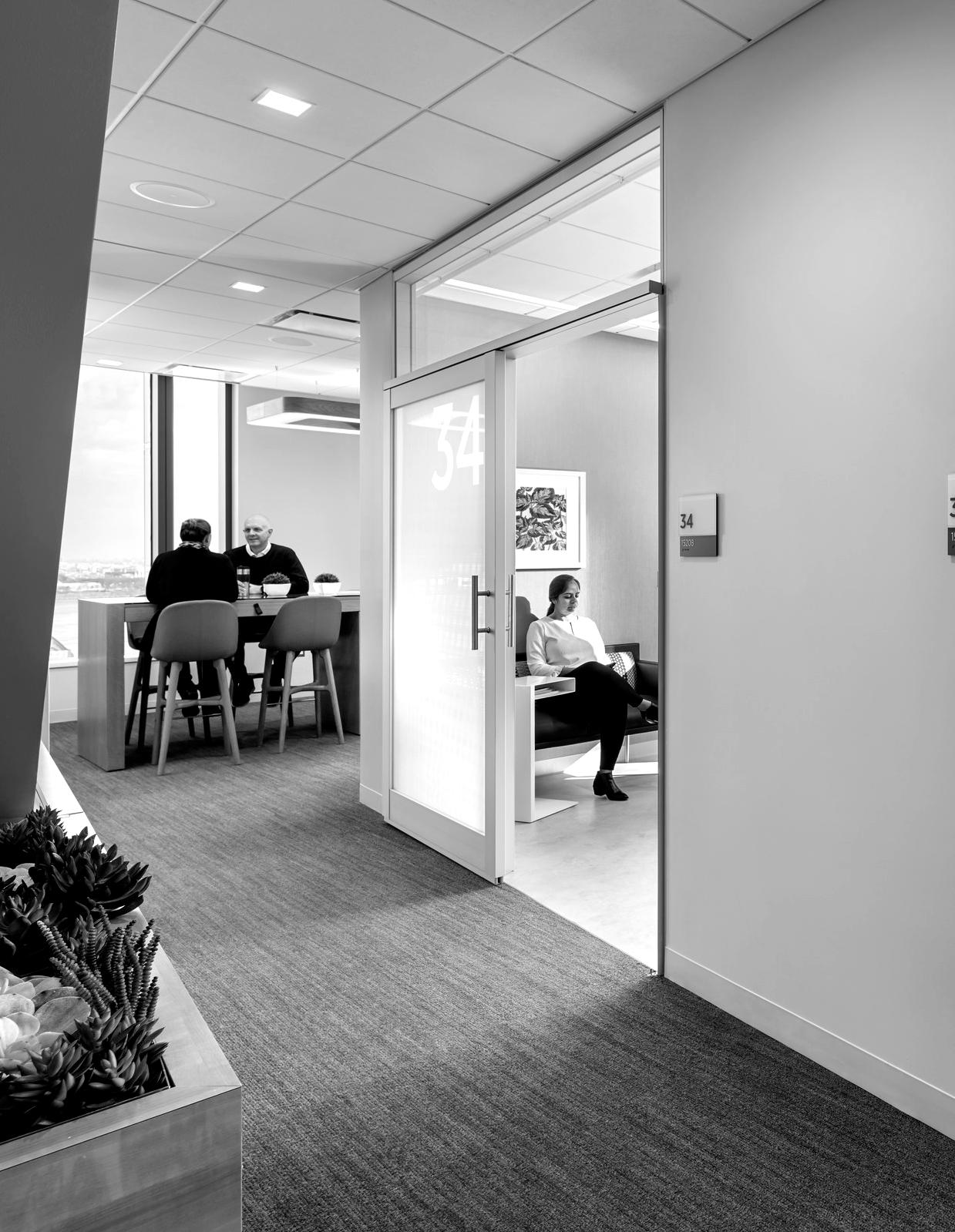Beyond the New Normal Healthcare Reset

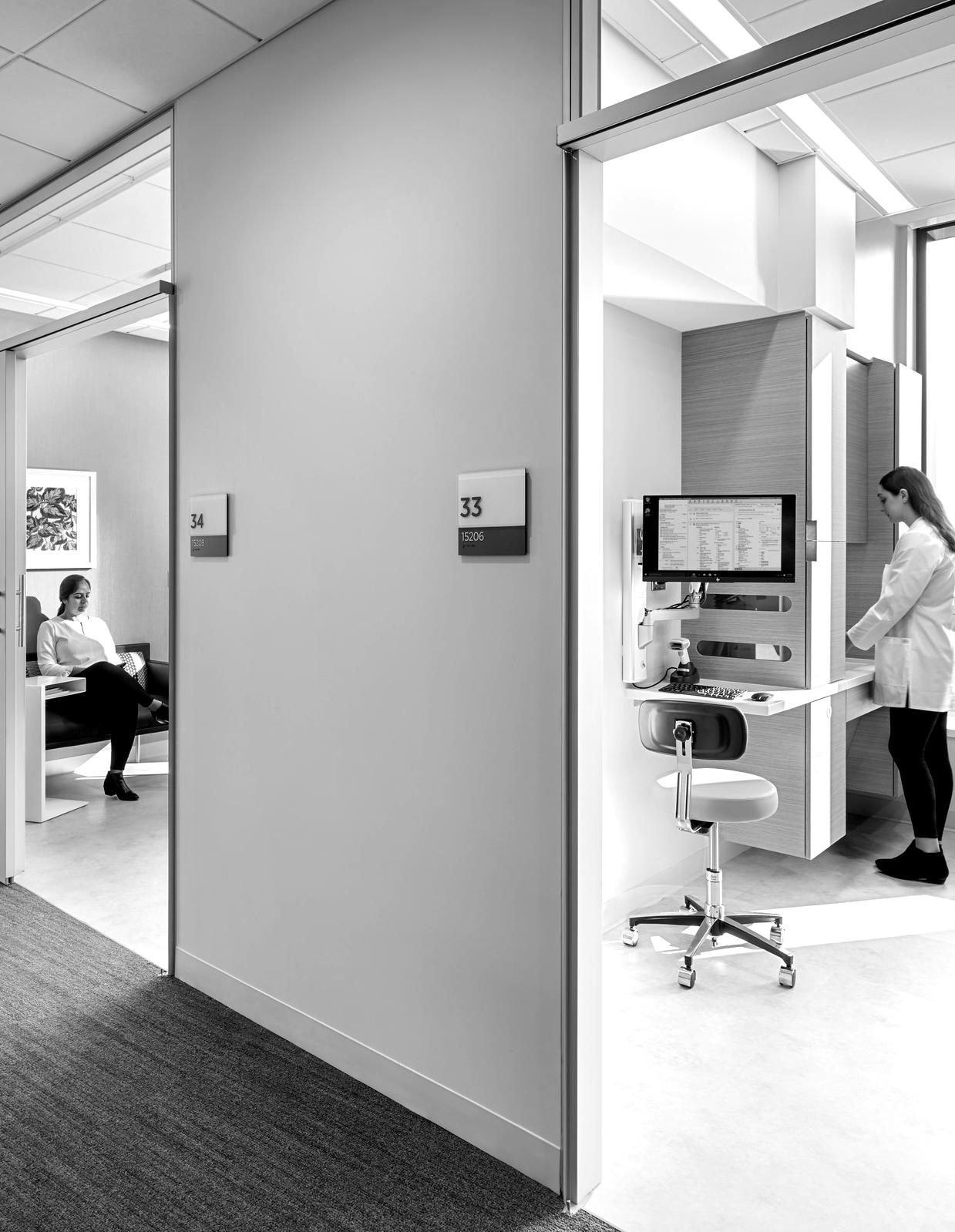
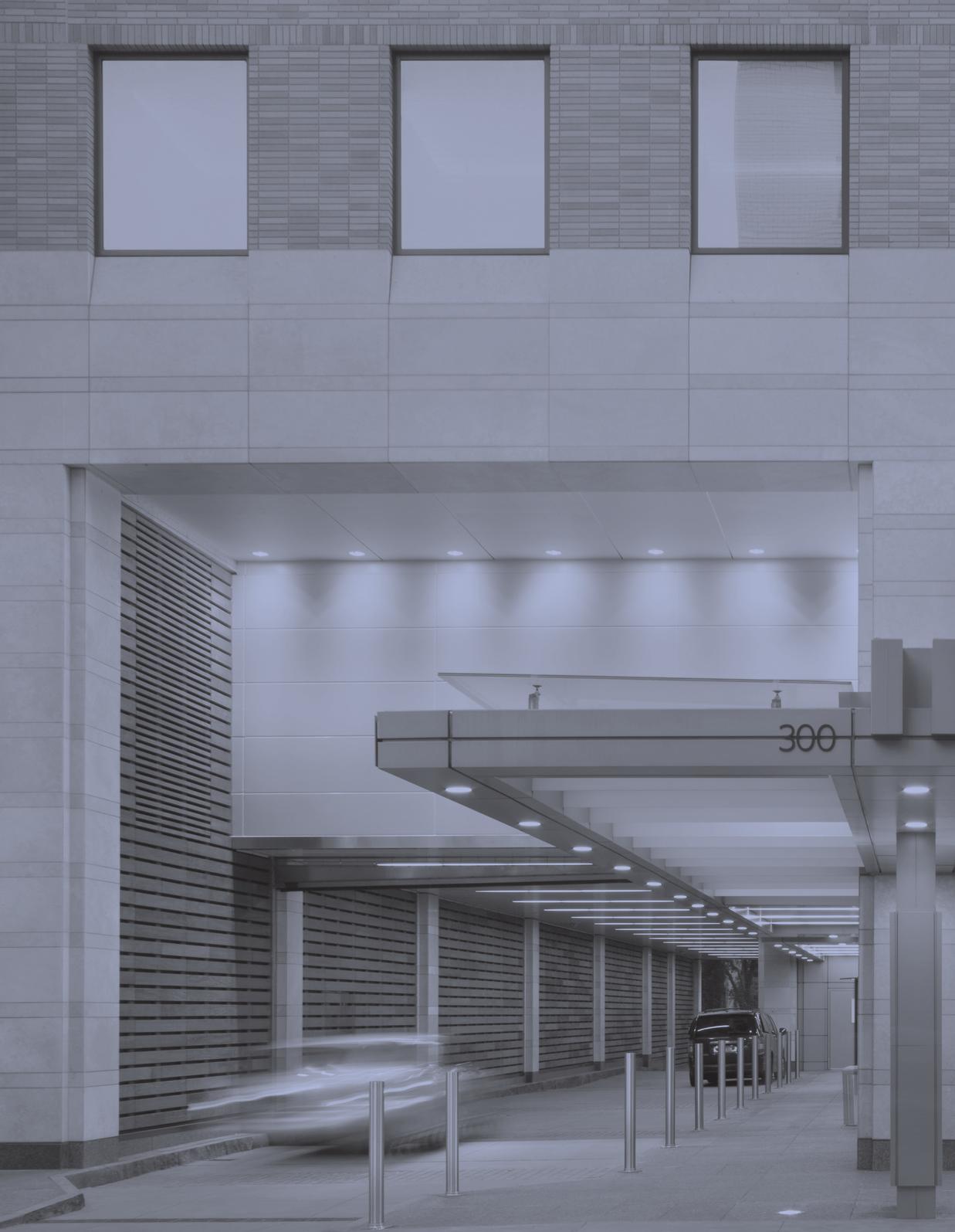






In January 2021, at the height of the pandemic, I began experiencing chest and abdominal pains. My husband, used to my dramatic health complaints, dismissed it as heartburn and an overactive imagination. Two days later, with the pain escalating we decamped for our neighborhood urgent care center. They ruled out a heart attack but transferred me to UCSF Medical Center’s emergency room. What transpired next was eye-opening for someone who has devoted his career to designing hospitals and advancing public health.
My arrival at UCSF was quite cinematic. A “tent city” had been erected for the triage of COVID-19 patients: white tents, red and yellow strobe lights, people in HAZ-MAT suits, overhead paging competing with sirens blaring. After passing through checkpoints to separate the COVID patients from everyone else, I found myself in an unused pediatric emergency room.
My first doctor told me my gallbladder had to come out. It’s an organ we can live without, she added, a vestige of when we were chasing big game on the Serengeti Plain. I told her I would like to think about it for a few days and possibly get a second opinion. “No, no,” she said, “you don’t understand. We are preparing the operating room as we speak.” Alone, as my husband was not allowed past the first triage point, I signed the paperwork and was transferred to imaging for further tests.
In Radiology, my next doctor explained what they were looking for in the scans. I asked her, too, if I needed a gallbladder. “No,” she said, “it’s a vestige of when we were chasing big game on the Serengeti Plain.” The scans complete, I finally moved on to my surgery.
I met my third doctor as I was being wheeled in to the otherwise vacant surgery suite, the pandemic having greatly affected UCSF’s elective surgery business.
Needless to say, the surgery was a success and six days later I was discharged sans gallbladder. My doctor later told me I was very lucky, and they had completed the surgery just in time. During my recovery it became known that I was part of the team that authored the new UCSF campus master plan. I received many staff visitors dropping by my room to tell me how excited they were about the vision for the campus and the plan to replace the Medical Center’s antiquated early modern buildings. I shared their excitement for new, patientfriendly facilities that support UCSF’s innovative three-pronged academic, research, and clinical mission.
Looking back on the experience, I realize that I was very fortunate. The healthcare system worked well for me at the peak of the COVID-19 pandemic, but that is not the case for many in our country. Our fractured healthcare system suffered severe economic disruption and unequal access to care was felt across social and economic divides. Public distrust of science and the embrace of conspiracy fears inflamed issues with vaccination. These themes of inequitable access, economic disruption, infection control, and dismissal of science present challenges to the American healthcare system that require innovative thinking and a fresh approach. This white paper is intended to contribute to that investigation.
I hope this research collaboration between Perkins Eastman and our healthcare industry colleagues can shed a little light on the conundrums our healthcare system faces today. I believe we and our design industry colleagues can do much to chart an innovative path forward.
Erich Burkhart FAIACOVID-19 continues to strain hospitals and healthcare systems around the world. Its impact is evident across every facet of the industry, from hospitals and clinics to insurance providers and pharmaceutical manufacturers. It has shifted consumer expectations around healthcare delivery and access, exposed vulnerabilities, and heightened public concerns around health, safety, and well-being. It has accelerated trends such as telehealth and market consolidation while stopping others in their tracks. The compounding issues of economic disruption, climate change, and social inequity add further complexity to an already challenging issue.
The healthcare sector is still under tremendous pressure. But along with the many challenges brought on by COVID-19, there is an opportunity for transformation and growth. Perkins Eastman is committed to understanding the impact of converging influences and pressures so we can better help our clients create resilient, human-centered healthcare environments that stand the test of time.
Our analysis draws from interviews with representatives of leading healthcare systems and hospitals. In addition, we present the findings of our survey of healthcare professionals across the United States.
Combined with our ongoing research, we explore pressing issues in healthcare and how design can best respond to current and future challenges.
It is impossible to know what the next crisis will be—or when it is coming—but events of the past year show just how in the face of change, our research explores trends, challenges, and opportunities in healthcare through the following
Infectious disease experts warned of the threat of a global pandemic for decades, but COVID-19 still caught the world by surprise. Some epidemiologists speculate that the next pandemic will be even more severe. How can hospitals futureproof themselves to prepare for the next acute threat?

The economic model of healthcare systems is complex and layered, dependent on government programs like Medicaid and Medicare, as well as relationships with insurance companies and others. Even a small change in the payment system can result in the loss of services and staff. How can healthcare systems build resilience against future economic shocks?
important it is to be prepared for the unexpected. In order to understand how healthcare can become more resilient, following four lenses:

The balance of power has long had healthcare implications, from access to providers to environmental factors. In the United States, a person’s zip code can predict longevity more accurately than gene scans. How can healthcare address inequities related to race, socioeconomic status, gender, and other identity markers?
Greenhouse gas emissions lead to climate change which, in turn, has direct and indirect effects on the health of people and the planet. Each year, millions of deaths are attributed to extreme heat and cold, weather-related events like fires and flooding, and the accelerated spread of infectious diseases due to rising global temperatures. How can healthcare be a part of the solution?
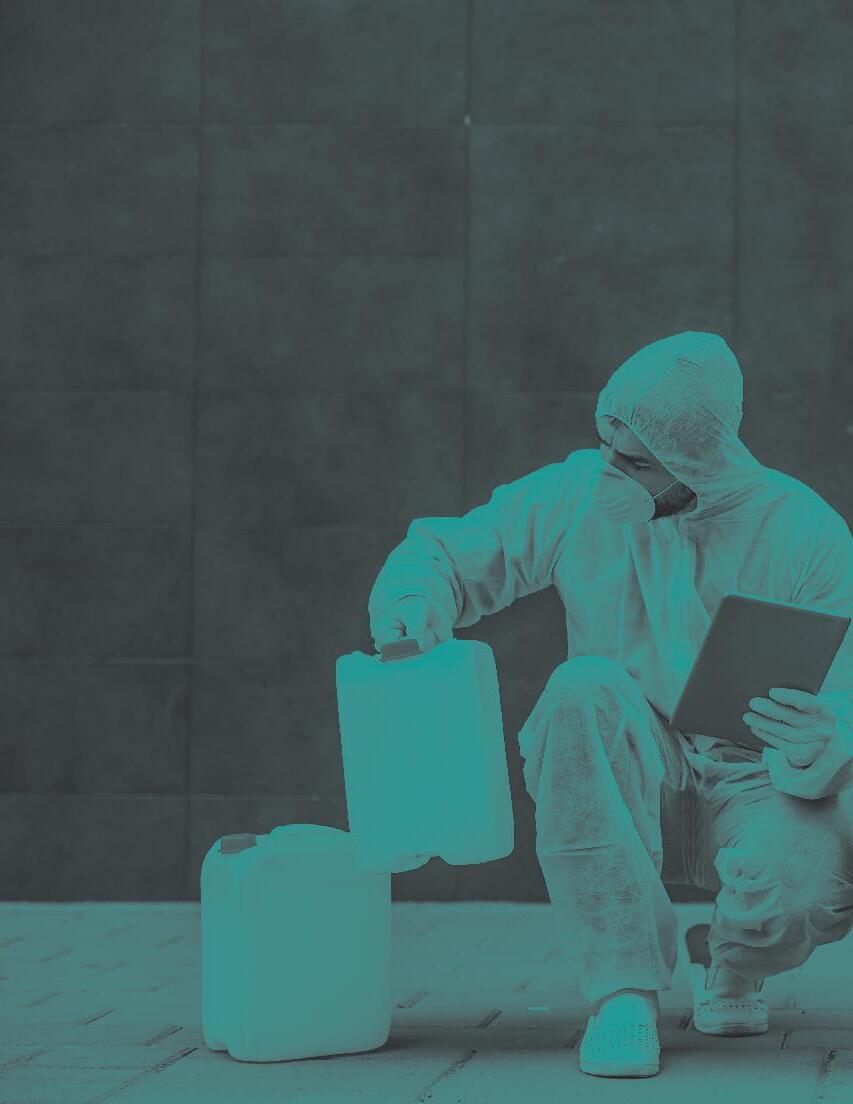
The threat of infectious disease is omnipresent. Conditions that allowed COVID-19 to take the world by storm leave us vulnerable to future outbreaks. Epidemics from respiratory pathogens such as the 2009 H1N1 flu and the 2002-2004 SARS outbreak presaged the COVID-19 crisis, along with fluid-borne diseases such as Ebola, host-spread diseases like Zika, and weaponized bacteria like Anthrax. Factors like rapid population growth, environmental stressors, urban expansion, and the global expansion of high-density livestock farms multiply the risk of future biological threats.
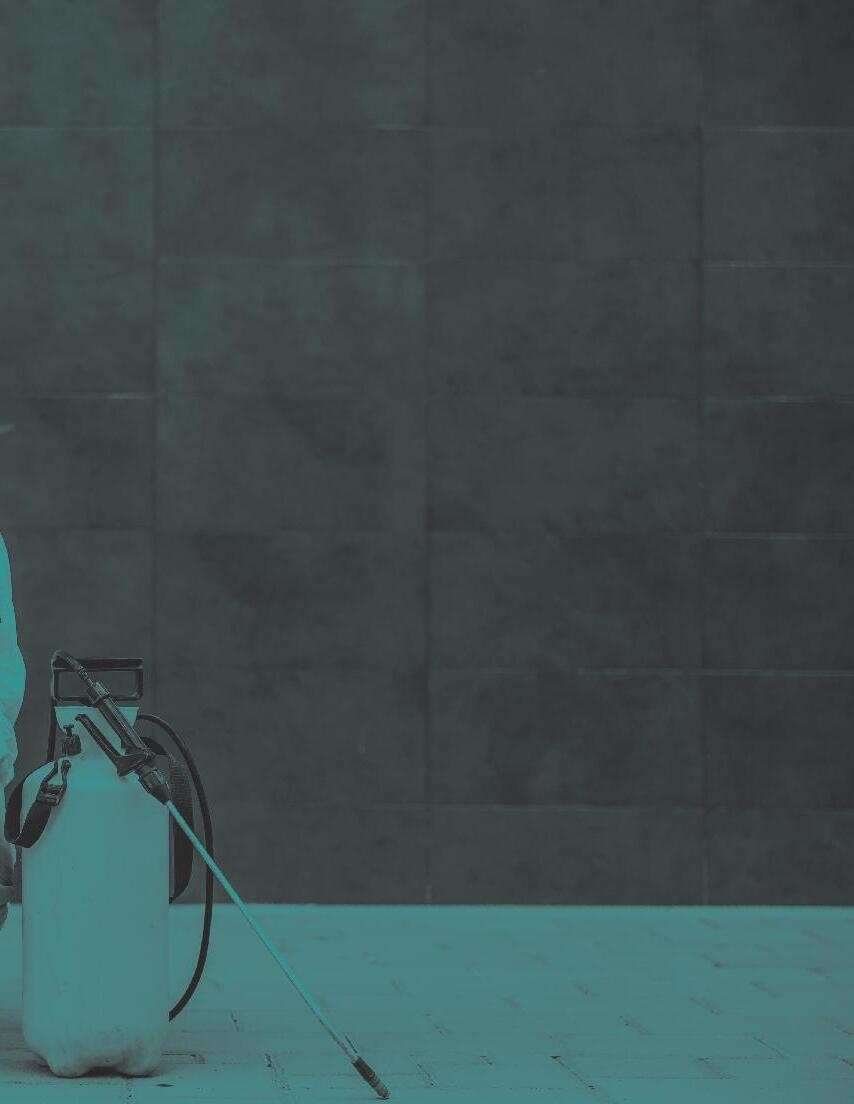
“We
have a lot of work to do to pandemic-proof our operation. We’re going to have to build that capability when we’re done firefighting.”
– Niyum Gandhi, Former CFO, Executive Vice President, Chief Population Health Officer, Mount Sinai Health System
Hospitals, healthcare systems, and frontline medical workers experienced the initial brunt of the global pandemic. Unprepared for a health crisis of this magnitude, hospitals struggled to provide PPE for staff, ventilators, and ICU beds for critically ill patients, and proper isolation between infected and non-infected populations. The strain continues: Nearly two years later, hospitals and healthcare systems grapple with revenue losses, staff shortages, and the challenge of re-starting elective procedures while still caring for COVID-19 patients.
As hospitals pivoted in response to COVID-19, non-urgent visits and procedures were canceled or postponed en masse. By one estimate, US hospitals lost between 30 and 55% of their elective patient volume in the first month of the pandemic.1 In the ensuing months, hospitals around the country suffered losses of billions in revenue due to missed surgeries and procedures.
COVID-19 took an extreme toll on healthcare human and capital resources. Exhausted and overworked, frontline workers reported burnout and post-traumatic stress symptoms at unprecedented levels--linked to medical errors, staff turnover, and lower quality of care for patients. According to our survey, mental health/staff burnout is the top concern cited by nearly half of all survey respondents.
The global pandemic accelerated digital transformation across the healthcare sector. Telehealth visits increased exponentially, up 154% in March 2020 compared to the previous year, according to the CDC.2 Telehealth visits have since declined but remain at a significantly higher baseline than pre-COVID levels.
Survey responses overall
Source: Healthcare | Looking to the Future 2021 Survey | Perkins Eastman
Risk factors from biological threats, climate change, and globalization are closely tied. Global warming and extreme weather events contribute to infectious disease, with rising temperatures leading to increased insect- and animal-to-human transmission of viruses like malaria, Zika, West Nile, and COVID-19. Environmental changes such as urban crowding, deforestation, and increased rainfall are directly and indirectly linked to a wide range of health risks for global populations.
Staff are burned out due to working more hours, which impacts their performance.
Patient-to-nurse ratios are at an all-time high.
Mental health and burnout of staff is critical, as well as monitoring their health and exposure to COVID.
Source: Open-ended survey responses from Healthcare | Looking to the Future 2021 Survey | Perkins Eastman
50 %
of hospitals are accelerating digital investments in response to the COVID-19 pandemic.
Source: Frost & Sullivan’s 2021 survey of IT professionals in the healthcare field
28 %
of patients switched or dropped a healthcare provider because of a poor digital experience in 2020, a 40% increase from 2019.
Source: Cedar 2020 Healthcare Consumer Experience Study
In response to events over the past 18 months, hospitals and healthcare systems are reconfiguring themselves on the fly under immense pressure. According to our survey, the top immediate actions taken by hospitals include increasing infection control, modifying waiting rooms and check-in areas, expanding telehealth offerings, and making changes to where and how outpatient care is delivered.
Hospitals are finding creative ways to increase surge capacity: converting existing rooms to negative-pressure, exploring modular and prefabricated solutions, and leveraging non-clinical support spaces as screening/testing or triage areas.
Flexible, acuity-adaptable spaces that support all stages of patient care will be key to future surges.
Hospitals continue to invest in technology, ramping up telehealth services, remote patient monitoring, medical technologies, and cloud-based IT. Consumer demands are changing; providing a convenient, frictionless, and personalized digital experience is not only desired but expected.
In addition to mechanical system upgrades, hospitals are taking steps to reallocate and reconfigure existing spaces. Some are shifting clinics off-campus, down-sizing waiting rooms, and revamping patient intake processes.
The mental health and well-being of staff emerged as a dominant theme in our survey responses. Survey respondents said their organization is investing in mental health benefits and support for staff. From a design perspective, this points to a focus on amenities like gardens and health-promoting respite areas to support staff well-being.
Survey responses overall
76 77
77% Increased infection control measures
76% Modifications to waiting room layouts, check-in experience, and/or queueing protocols
73% Increase in telehealth and remote care
7358
Source: Healthcare | Looking to the Future 2021 Survey | Perkins Eastman
We have updated our supply chain and now have staffing models to be able to flex in future pandemics.
We are [improving] our connections with local healthcare institutions and networks. We worked together on vaccines and see that as a model going forward.
58% Modifications to where/how outpatient care is delivered
We are prioritizing mental health benefits for staff.
[We are] very focused on the patient experience.
Source: Open-ended survey responses from Healthcare | Looking to the Future 2021 Survey | Perkins Eastman

The COVID-19 pandemic severely disrupted the global economy in numerous ways, but the effects on healthcare may have been more severe and unexpected than any other sector. In regions where the virus surged, hospitals were overwhelmed providing emergency care and forced into a survivalmode of operation. In regions without heavy caseloads, the elective procedures that generally provide revenue for hospitals were canceled to make beds available for the anticipated surge. Even as the peak of infection has waned in the United States, patients have continued to avoid hospitals and clinics, postponing the services that help institutions meet their bottom line.
“It opened a lot of people’s eyes to look at change and be aware that the status quo is not permanent. It’s a fluid thing. That, to me, is the biggest piece of the equation.”

– George Tingwald, MD, AIA, Director of Medical Planning, Stanford Health Care
Understanding the impact of the economic disruption triggered by the pandemic yields insights with broad relevance. It is unfortunate, but likely, that the world will see additional shocks to the global economy in the coming years, and even regional or local disruptions will require preparedness and resiliency. By analyzing how the healthcare sector responded to the downturn wrought by the pandemic, institutions can better ready themselves to weather future shocks.
The secondary impacts of the pandemic, like unemployment and housing instability, have placed additional demands on a healthcare system ill-equipped to handle unexpected stressors. As a refuge for many of society’s underserved, hospitals and clinics became the first line of defense in 2020 as homelessness and substance abuse surged along with the virus.
As shocking and unexpected as the pandemic may have been, many of the weaknesses revealed within the healthcare system existed well before the emergence of the novel Coronavirus. Additionally, the widespread application of the fee-for-service model meant that providers depended on elective care for revenue, and the industry was already amidst movement away from independent practitioners toward consolidation.
Many of the major reactions to the pandemic were trends that were already underway, such as a shift toward ambulatory care and the adoption of telemedicine.
Additionally, many smaller hospitals could not survive the loss of revenue during the pandemic and the already fast pace of healthcare provider consolidation accelerated as larger systems bought smaller, struggling systems. This, in turn, led to reduced competition and higher costs in some areas.
“A well-functioning healthcare system is a pre requisite for a well-functioning economy.”
- Brookings Institute
More than 50% of physicians in the United States work in practices with 10 or fewer physicians.
Source: Medical Group Management Association (MGMA) COVID-19 Financial Impact on Medical Practices via Stat News Online
Projections indicate that up to 60,000 primary care practices in the United States may close or significantly scale back as a result of COVID-19.
Source: Applied XL | Stat COVID-19 Worldwide Dashboard via Stat News Online
Survey responses: Healthcare Practitioners vs. Facility and/or Real Estate management
New needs stemming from the closure or disruption of other local healthcare providers
Increased cost of heightened safety protocols
Reduced insurance coverage of patient communities
Facility and/or Real Estate Management
Source: Healthcare | Looking to the Future
Loss of revenue from reduction in elective care procedures
Reduced insurance coverage of patient communities
Increased cost of heightened safety protocols
Changing profile of need in patient communities
2021 Survey | Perkins Eastman
Technology that would most meaningfully improve healthcare experience
Economic disruption resulting from COVID-19 continues to impact healthcare in many ways, forcing hospitals to cut back on costs and reassess spending priorities. In the immediate aftermath of COVID-19, non-urgent medical procedures were pushed off indefinitely as hospitals moved into emergency mode. At the same time, an influx of patients intensified the demand for medical supplies and special equipment, driving up costs.
67 % Paperless check-in
Easy mobile booking
Even before the pandemic took hold, the demand for ambulatory care was increasing compared to inpatient care. The development of minimally invasive medical procedures and a push from insurers to reduce cost means that an increasing number of patients are receiving care without overnight hospital stays. Along with concerns about COVID-19, these factors are driving hospitals to reallocate their portfolio of spaces to support a higher ratio of ambulatory care.
The rapid and widespread adoption of telemedicine in 2020 may be one of the most significant and transformative effects of the COVID-19 pandemic. This transformation has already impacted direct provider-to-patient engagements, altering the needs for examination space and technology infrastructure, as specialist care at remote or rural clinics is increasingly provided via digital connection to a central hub.
40 %
48 % Prices ahead of time
Source: Rise of the Practical Patient 2018 Consumer Healthcare Report Solv / Urgent Care Association of America
The pandemic has disrupted expectations related to queuing, the timing of care, and the locations of care providers. Patients, reluctant to wait on-site for care, opt for local urgent care facilities or telehealth visits instead of using the emergency department. At the same time, the COVID-19 pandemic re-emphasizes the need for triage spaces and facilities that pivot between functions. Together, these market forces and shifting care needs suggest a systems-based approach to space planning and flexible design. Instead of bringing people to the hospital, bring the hospital to people with satellite small hospitals and ambulatory care facilities in communities.
“The biggest learning from the COVID period has been the adoption of virtual care: video and phone visits. We are continuing to assess the impact but believe we can reduce the number of exam rooms over time. We are also taking a critical look at our new hospitals – actively moving surgical cases from hospitals to ambulatory surgery centers, and determining the impact on bed need through our use of an Acute Care at Home Program.”
“We have lots of queueing in healthcare and we’re trying to get rid of it. Digital self-check in. Walk-in care. People waiting to see family members. We’re going to have to figure out how we deal with all of that.”
“People are working on making the patient’s journey through the system as coordinated as possible. So if a cancer patient needs an x-ray and a blood test after a physician visit, you don’t just leave that up to the patient. You design a space that enables coordination of care.”
Craig Acosta Vice President, Kaiser Permanente Niyum Gandhi Former CFO, Executive Vice President, Chief Population Health Officer, Mount Sinai Health System John Gunn Former COO, Memorial Sloan KetteringIncrease proportion of facilities for ambulatory care
Leverage telehealth to reduce facility requirements
Based on user interviews with healthcare leaders
Prioritize patient user experience
Create flexible spaces that can pivot to different functions
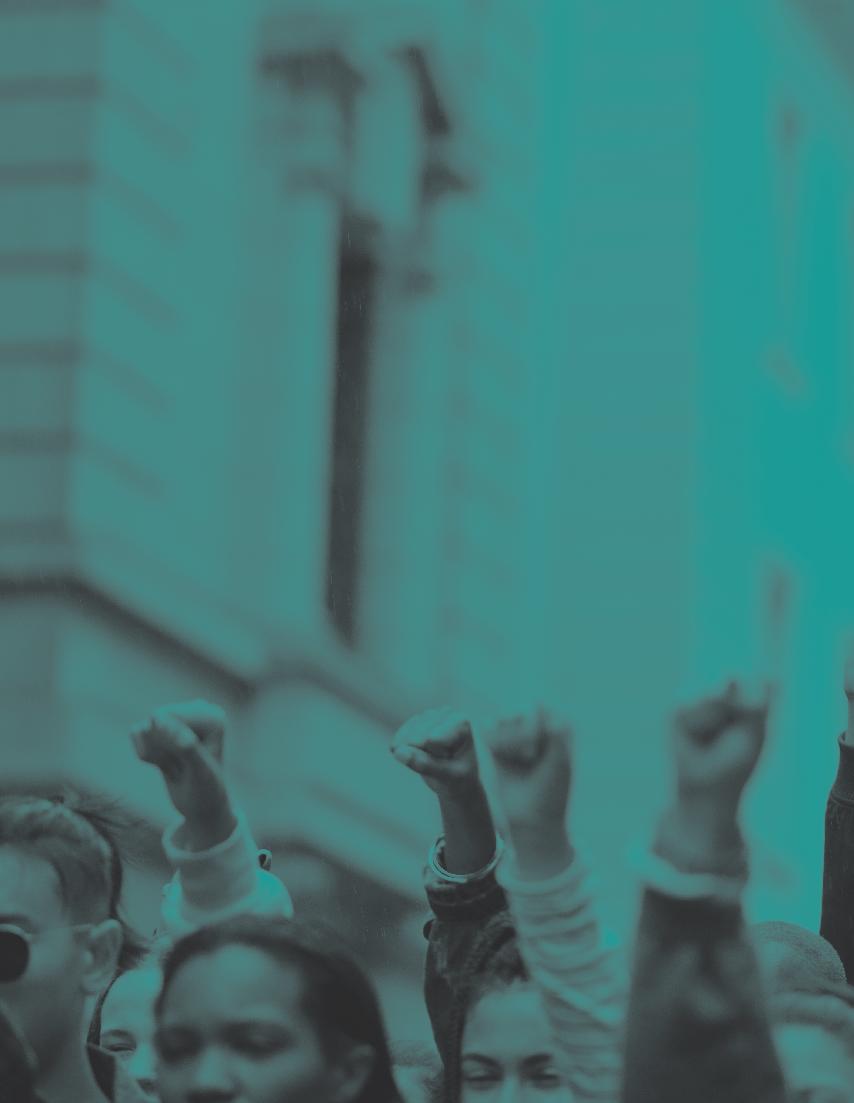
Health disparities by race and socioeconomic status reflect institutional and systemic inequities that continue to plague our society. These differences have become even more apparent during the COVID-19 pandemic: In 2020, life expectancy declined by three years for Black Americans and two years for Latino Americans compared to the nationwide average.3 Compounding the enormous human toll, health inequities translate to billions of dollars in excess medical costs in the United States alone.4
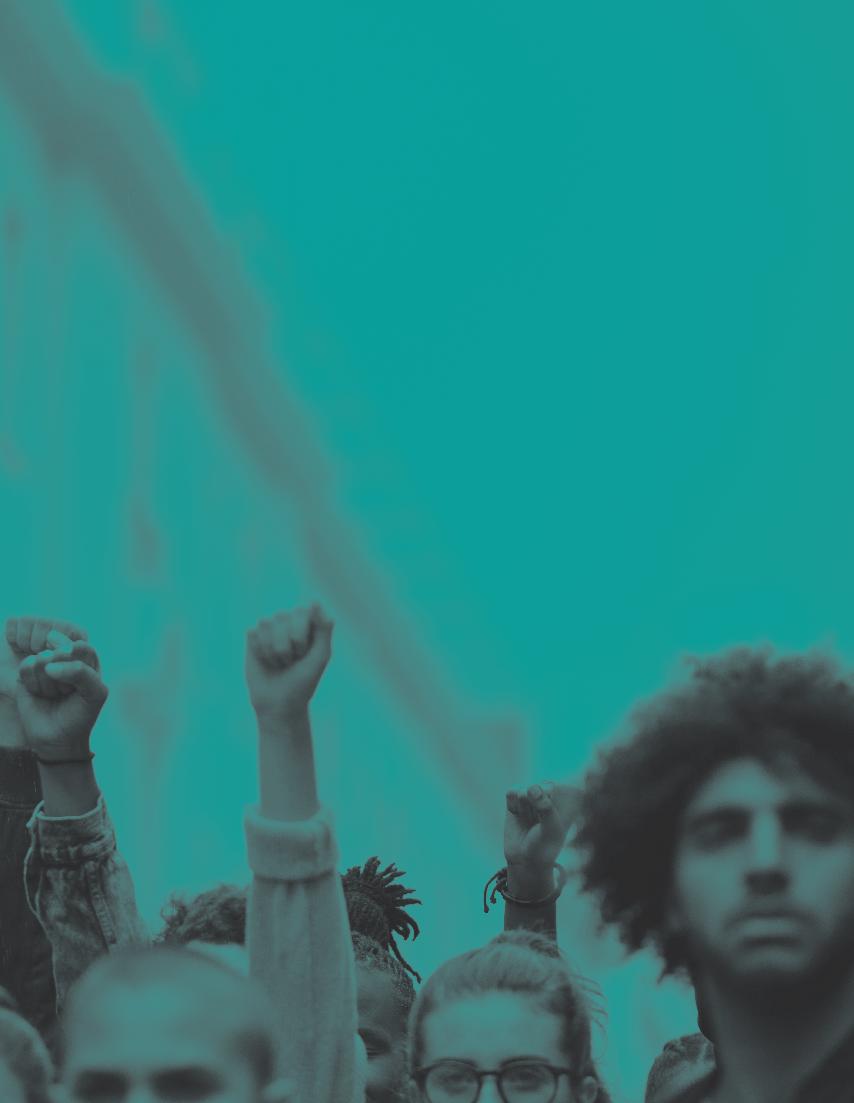
“We discharge patients and put them back where they’re at risk. So we try to put them in housing, so they don’t come back to the hospital beds. In the Recovery Care Center, they get occupational therapy and are put in a position to get employment and stay out of the hospital.”
– Andy Moey, Assistant Deputy Director, Los Angeles County Public WorksThe disproportionate impact of COVID-19 on minority populations highlighted the broader issues of social inequity in healthcare. Increasing wealth gaps, lack of healthcare insurance and child care, and crowded living conditions contribute to the risks and negative health impacts on disadvantaged communities.
The pandemic exacerbated health disparities across different racial and socioeconomic groups. People belonging to various racial and ethnic minority groups in the United States may face discrimination in their interactions with the healthcare system, lack access to care, or suffer disproportionately from medical conditions. In addition, many minority groups work in essential worker settings like hospitals, farms, and grocery stores.5
Beyond the direct impacts of health disparities, the lack of insurance and resources--along with job insecurity--result in significant economic stress. Nearly 30% of Americans lost their health insurance in 2020 and more than half of those remain uninsured in 2021.6 Addressing the needs of these patients puts tremendous strain on care providers.
Healthcare providers are increasingly encountering indirect consequences of health disparities such as food insecurity, unemployment, and housing instability. While outside the traditional purview of hospital systems, addressing these fundamental issues can be a way to help at-risk populations from requiring hospitalization in the first place.
Survey responses overall
Source: Healthcare | Looking to the Future 2021 Survey | Perkins Eastman

“With Project Roomkey, the County was allowed to book hotel rooms for indigent and homeless people who may be affected by COVID. We were immediately able to house homeless people in the motels.”
– Andy Moey, Assistant Deputy Director, Los Angeles County Public Works

“We partnered with Silicon Harlem, a great non-profit that’s been able to raise money because of COVID and get telemedicine out to NYCHA –that partnership has been great.”
– Niyum Gandhi, Former CFO, Executive Vice President, Chief Population Health Officer, Mount Sinai Health System
Addressing systemic issues causing health disparities across different populations will require ongoing and concerted efforts across many facets of society. However, there is much that the Healthcare sector itself can do to improve. Fundamentally, this means transitioning from an illness-oriented to a wellness-oriented model of care.
Different groups have different root causes of inequities. why populations are not participating in healthcare is necessary before crafting a response.
Social determinants of health include housing, food, transportation, education, childcare, broadband access, economics, community, and environmental risk.
When individuals stay away from hospitals until an emergency, the urgency and costs of care go up. Proactively engaging community promotes efficient and effective care. Healthcare providers can maximize utility and maximize the efficiency of care by keeping populations healthy but away from hospitals.
Addressing mental health issues in patient populations will help individuals take better care of themselves and reduce risk.
Emergency Department visits vary widely by race:
404= +435= +172= Black Hispanic White Other
+804=
804/1,000
404/1,000 435/1,000 172/1,000
Source: Centers for Disease Control and Prevention
“Health equity [is] a lens through which all of your work should be viewed.”
– APHA, Social Justice and Health
More than 30% of direct medical costs for Blacks, Hispanics, and Asian Americans in the United States are tied to health inequities, which translates into more than $230 billion over a four-year period.
Source: American Public Health Association
WHAT RECENT STEPS HAS YOUR ORGANIZATION TAKEN TO ADDRESS SOCIAL INEQUITY IN HEALTHCARE?
Survey responses overall
70
70% Outreach to the community about health and wellness
46% Diversification in care providers, staff, and leadership
46
33
Source: Healthcare | Looking to the Future 2021 Survey | Perkins Eastman
33% Partnerships of collaboration with outside entities/ other hospitals
30
30% Investment in preventative care and/or public health

According to the World Health Organization, climate change is the greatest threat to global health in the 21st century. Global warming is already causing significant harm to people and the planet. Environmental and health hazards are increasing in frequency and severity, including hurricanes, severe thunderstorms and flooding, wildfires, and heat waves. All of these present acute and longterm health risks for the global population.

“We need to transform the way we do almost everything.”
- Bill Gates, on climate change
4.6 %
The healthcare industry is responsible for 4.4–4.6% of global greenhouse gas emissions.
Source: Health Affairs Online Journal, December 2020
Climate change and fossil fuel pollution are tied to
$820 billion in healthcare costs per year in the United States.
Source: The Natural Resources Defense Council (NRDC)
Climate change accounts for over
150,000 deaths per year
Source: World Health Organization
The healthcare industry is both affected by—and a major contributor to—climate change. In addition to energy used to build and operate facilities, the vast global network of healthcarerelated manufacturing, transport, and distribution chains are a major source of greenhouse gas emissions. With regard to the human impact, illnesses and deaths related to pollution and climate change place an additional burden on hospitals and healthcare systems.
Supply chain emissions, associated with all the products that are used to make a hospital function, account for 57% of the emissions from the healthcare system. Anesthetic gases also have a disproportionate impact on global warming, accounting for 5% of the carbon footprint of a typical hospital.
Hospitals are the second most energy-intensive building types in the United States. While hospitals inherently use more energy than most other building types, it is possible to significantly cut energy use through smart design, system selection, and operations. In many hospitals, significant amounts of energy are wasted, so there is great potential to reduce environmental footprint while saving operational cost.
The embodied energy associated with the extraction, manufacturing, and transportation of materials used in the construction and renovation of healthcare facilities has a significant environmental impact. As energy-use operations become more efficient, embodied energy represents a larger chunk of the overall environmental impact of a building.
WHAT ARE YOUR TOP CONCERNS RELATED TO CLIMATE CHANGE?
Survey responses overall
74
75% Greater risk from catastrophic weather events
69% Increased health risks due to pollution /poor air quality
69
5647
56% Increased frequency of infectious disease outbreaks
Source: Healthcare | Looking to the Future 2021 Survey | Perkins Eastman
• Rising temperature
• Extreme weather
• Sea level rise
• Increased extreme heat and ozone watch days
• Declining air quality (ozone and particulates)
• Altered growing seasons for plants
• More severe storms and flooding (power outages, infrastructure damage)
• Increased pests (ticks, rodents, mosquitoes)
• Diminished water quality
Wildfires are a big concern with respect to air quality.
Our planet has been through climate changes over history and this is another one. Adapt and move on.
47% Increase in migrating populations and associated challenges
29
29% Lack of access to nutrition and care
• Heat-related illness and death
• Asthma and respiratory illnesses
• Allergies
• Exacerbation of chronic illness due to heat, air quality, extreme weather events (cardiovascular, COPD, mental health)
• Lyme, West Nile, other vector-borne diseases
• Water-borne illnesses
Infectious disease and access to healthcare are greater concerns outside my community.
Source: Open-ended survey responses from Healthcare | Looking to the Future 2021 Survey | Perkins Eastman
Eliminating
100 SQ/FT of office space
reduces emissions by 1 MT/YEAR
Source: The American Consumer Institute Center for Citizen Research (ACI) of all healthcare office visits and outpatient services could be delivered virtually.
24 %
Source: McKinsey & Company
According to the Resilient Design Institute, resilience is “the capacity to adapt to changing conditions and to maintain or regain functionality and vitality in the face of stress or disturbance.” Increasing the resilience of our healthcare facilities is critical in order to adapt to the increasing risks from climate change.
The hub-and-spoke model, in which a centralized “hub” is surrounded by smaller satellite outposts, is quickly gaining traction as healthcare entities consolidate and grow. While this model provides a greater degree of convenience and accessibility for patients, it can also benefit the planet by reducing carbon emissions and fuel consumption associated with driving to and from appointments.
Going virtual saves resources associated with in-office visits, such as paper and materials used in exam rooms, cleaning of equipment, and energy costs for electricity, heating, cooling, and general operations. There is an opportunity to reduce or reallocate physical office space, leading to significant reductions in the embodied and operational energy tied to constructing and maintaining those facilities.
Infrastructure resilience is about mitigating the disruption caused by catastrophic or unforeseen events. Steps include taking stock of risks and hazards, assessing vulnerabilities, exploring options, establishing priorities and, finally, taking action. Creating a facility toolkit or resiliency framework can help to ensure a holistic and sustainable plan.
There is an increasing focus on design and construction methods that are healthier for people and the planet. Increased recycling efforts, sustainable materials, and alignment with LEED or other industry sustainability standards are a few of the steps organizations are taking in response to climate change. For example, the UC system, including UC Health, has pledged to be carbon neutral by 2025. Hospitals are investing in renewable energy such as solar, wind, and geothermal technologies.
Survey responses by region
The ability to adapt during disasters and serve as a lifeboat for the larger community. 56%
Structural Stability
The ability to withstand stronger storms and/or higher floodwaters.
Passive Survivability
The ability to function without power from the grid for long periods of time while providing an acceptable level of care.
Flexibility

The following section contains questions tied to the four areas addressed in this report. These questions, intended as a primer for further inquiry, may be explored in greater depth through targeted workshops with key stakeholders to assess organizational preparedness for biological, economic, social, and environmental challenges.

Is my organization configured to weather an unexpected biological threat?
Negative pressure rooms to contain airborne pathogens
Spaces that can be rapidly converted into emergency care sites
HVAC system can utilize 100% outside air
Air handling units’ purification systems utilize UV light
Sufficient emergency surge capacity
Distributed ambulatory care away from infectious patients
Sufficient resources to care for mental wellbeing of staff
Queueing systems without physical waiting rooms
Crisis plan to manage respiratory care and other critical services
Stockpiled PPE and secure supply chain for additional supplies
Sufficient staff and IT infrastructure to run a virtual care model
Is my hospital or health system equipped to handle a major economic disruption?
Equipped to handle changes due to site-ofcare payment rules
Part of a system to weather financial turbulence
Hospital is strategizing for long-hauler patients
Focus on ambulatory care and post-acute care services
Part of a Group Purchasing Organization (GPO)
Addressed changes related to “Certificate of Need” (CON) laws
Prepared for both Payfor-service and Pay-forperformance
Has plan to mitigate the drops in elective care in times of crisis
Sufficient cash days in reserve
Is my institution doing what it can to address social injustice?
We have care centers in underserved communities
Clinical centers have a similar look and feel across communities
The healthcare centers have easy access from transit
Clinical centers can be hubs for community revitalization
Clinics offer telehealth access to specialty services
We develop partnerships to help extend services
We subsidize services for patients without insurance coverage
We have outreach programs for our healthcare centers
Our healthcare system is taking action on homelessness
We offer after-school, nutrition programs, or other social services
The same range of services are offered in all communities
We help our patients access broadband Internet at home
Is my healthcare system/hospital mitigating and preparing for climate change/global warming?
Centralized facility for laundry, laboratory, and other services
Emergency generators are located outside of flood-prone areas
Utilizes geothermal or other energy-efficient systems
Our HVAC systems utilize energy recovery systems
Energy audit to understand energy consumption
Sustainability plan for recycling, water, and energy use
Emergency action plans are practiced through simulations
DEVA plan (Disaster, Emergency, Vulnerability, Assessment)
We have eliminated the use of ETO sterilizers
Centers have energyefficient lighting systems
1
https://www.healthaffairs.org/do/10.1377/hblog20201006.263687/full/
2 https://www.cdc.gov/mmwr/volumes/69/wr/mm6943a3.htm
3 https://www.cdc.gov/nchs/data/vsrr/VSRR10-508.pdf
4 https://www.kff.org/racial-equity-and-health-policy/issue-brief/disparities-in-health-andhealth-care-5-key-question-and-answers/
5 https://www.cdc.gov/coronavirus/2019-ncov/community/health-equity/racial-ethnicdisparities/index.html
6 https://www.prnewswire.com/news-releases/29-of-americans-lost-their-health-insurance-in2020-more-than-half-remain-uninsured-in-2021-301208068.html
1 Page 14, https://www.frost.com/news/press-releases/over-50-of-hospitals-will-acceleratedigital-investments-to-meet-the-quadruple-aim/
2 Page 14, https://www.cedar.com/healthcare-consumer-study/
3 Page 19, https://www.statnews.com/2020/05/28/covid-19-battering-independentphysician-practices/
4 Page 19,
5 Page 21,
https://www.statnews.com/feature/coronavirus/covid-19-tracker/
https://www.solvhealth.com/for-providers/blog/2018-consumer-healthcare-report
6 Page 27,
https://www.apha.org/what-is-public-health/generation-public-health/our-work/ social-justice
7 Page 30,
https://www.healthaffairs.org/doi/10.1377/hlthaff.2020.01247
8 Page 30,
https://www.nrdc.org/media/2021/210520
9 Page 30,
https://www.who.int/heli/risks/climate/climatechange/en/
10 Page 32,
https://www.theamericanconsumer.org/2008/03/telemedicine-helping-consumersand-the-environment/
11 Page 32,
https://www.mckinsey.com/industries/healthcare-systems-and-services/ourinsights/telehealth-a-quarter-trillion-dollar-post-covid-19-reality
Carbon Footprint from Anaesthetic gas use [PDF]. (2013, December). Cambridge: Sustainable Development Unit.
Clientservices. (2015, August 03). Telemedicine: Helping Consumers and the Environment. Retrieved January 22, 2021, from https://www.theamericanconsumer.org/2008/03/ telemedicine-helping-consumers-and-the-environment/
Eckelman, M. J., & Sherman, J. (2016). Environmental Impacts of the U.S. Health Care System and Effects on Public Health. PloS one, 11(6), e0157014. https://doi.org/10.1371/journal. pone.0157014
Finnegan, J. (2019, October 8). Climate impact: Doctors will see uptick in illnesses from extreme heat, infectious diseases. Retrieved January 22, 2021, from https://www.fiercehealthcare.com/ special-report/special-project-doctors-will-see-climate-change-impact-patients
Healthcare: An Overview of Energy Use and Energy Efficiency Opportunities [PDF]. (n.d.). Energy Star.
Holmner, A., Ebi, K. L., Lazuardi, L., & Nilsson, M. (2014). Carbon footprint of telemedicine solutions--unexplored opportunity for reducing carbon emissions in the health sector. PloS one, 9(9), e105040. https://doi.org/10.1371/journal.pone.0105040
Reed, T., & Landi, H. (2019, October 8). Climate impact: Health systems need to shore up facilities against costly storms. Retrieved January 22, 2021, from https://www.fiercehealthcare. com/special-report/special-project-health-systems-need-to-shore-up-facilities-againstcostly-damage
Renfrow, J. (2019, October 8). Climate impact: Providers should prepare for uptick in acute anxiety and chronic PTSD. Retrieved January 22, 2021, from https://www.fiercehealthcare.com/ special-report/special-project-from-acute-anxiety-to-chronic-ptsd-mental-health-industry-needs-a
Robbin, J. (2016, February 3). How Forest Loss Is Leading To a Rise in Human Disease. Yale Environment 360. Retrieved June 10, 2020 from https://e360.yale.edu/features/how_forest_ loss_is_leading_to_a_rise_in_human_disease_malaria_zika_climate_change (J. Shields, personal communication, April 27, 2020).
Schierhorn, C. (2016, July 6). Improving energy efficiency in hospitals. Retrieved January 22, 2021, from https://www.hfmmagazine.com/articles/2232-improving-energy-efficiencyin-hospitals
What is Resilience? (2020, July 27). Retrieved January 22, 2021, from https://www. resilientdesign.org/defining-resilient-design/
WHO calls for urgent action to protect health from climate change – Sign the call. (n.d.). Retrieved January 22, 2021, from https://www.who.int/globalchange/global-campaign/cop21/en/
Perkins Eastman gives thanks to our survey participants and industry leader interviewees who generously lent their time and experience to help us gather key insights and data regarding changes in the healthcare industry across a variety of disciplines.
Healthcare Industry Partners

Andy K. Moey, Assistant Deputy Director, Los Angeles County Public Works
Craig M. Acosta, Vice President, Kaiser Permanente
George R. Tingwald, MD, AIA, Director of Medical Planning, Stanford Health Care
Jeffrey I. Farber, MD, President and CEO, The New Jewish Home
John R. Gunn, Former COO, Memorial Sloan Kettering
Lee Domanico, Former CEO, MarinHealth
Niyum Gandhi, Former CFO, Executive Vice President, Chief Population Health Officer, Mount Sinai Health System
Perkins Eastman
Healthcare Design Practice Leaders
Erich Burkhart FAIA, Principal and Executive Director
Harold Park AIA, LEED AP, Principal
Jason Harper AIA, Principal
Jason Haim AIA, DBIA, LEED AP, Principal and Executive Director
Lee Pellegrino AIA, WELL AP, Principal
Author: Jingxian Xu, Josh S. Jackson, Katherine Gluckselig, Rebecca Milne, Sanjay Parmar
Support: Erich Burkhart, Jessica Charlap, Jessica Knapp
Photography: Copyright Josh Edelson/Getty Images. 2020 Wildfire in California. Retrieved from https://www.cnet.com/how-to/updates-on-wildfires-ravaging-california-oregon-and-west-and-howto-help/, pages 28, 29
https://covid19.lacounty.gov/project-roomkey/, page 26
https://twitter.com/SiliconHarlem/status/1275416684975792137/photo/1, page 26
Copyright Chris Cooper/Courtesy Perkins Eastman: pages 2-3
Photography Andrew Rugge/Courtesy Perkins Eastman: Cover and Back Image, pages 34-35
Copyright Will Pryce/Courtesy Perkins Eastman: pages 8-9
Adobe Stock: page 10-11, 16-17, 22-23
Graphics Copyright: Perkins Eastman: pages 7, 8, 9, 13, 14, 15, 19, 20, 21, 25, 27, 30, 31, 32, 33, 36, 37, 38, 39
Icons: The Noun Project: pages 7, 8, 9, 13, 15, 19, 21, 25, 27, 31, 33, 36, 37, 38, 39
